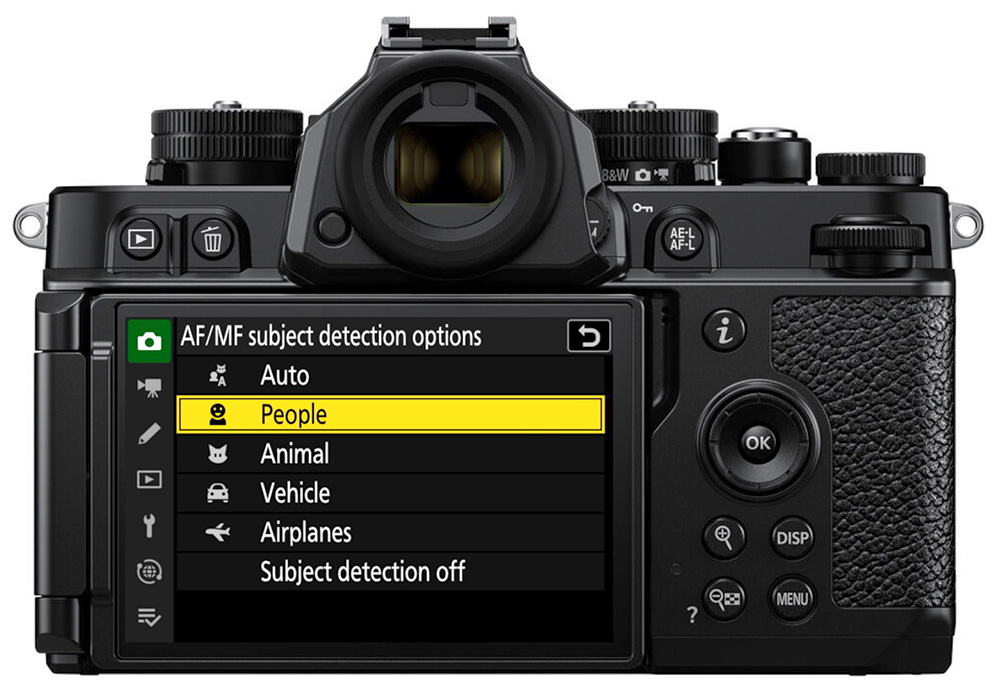Disclosure: This post may contain affiliate links. I earn a small commission of product sales to keep this website going.
What is Subject Detection in Manual Focus mode, and how does it work? It’s actually quite simple! As far as I know, the Nikon Zf and now the Z6III were the first cameras anywhere to offer such a feature. And I don’t know why it took so long for a camera brand to implement this; kudos to Nikon.
You can watch the video here:
How Manual Focus Subject Detection works
Manual focus subject detection works the same as autofocus subject detection, the difference being that there’s no autofocus available. Like autofocus subject detection, it’ll track whichever type of subject you’ve set in the menu in whichever focus area you’ve set. It’ll further refine that track down to eyes if it detects eyes, or even airplane cockpits if those are detected in airplanes.

That’s the tracking part. Now for the focusing part. As you rotate that focus ring, whatever’s being tracked will turn green when it’s in focus. And it works remarkably well!
There are, of course, times when you just have to use manual focus instead of autofocus. Low light, low contrast, and manual focus-only lenses are times autofocus might not be available.
Manual focus subject detection will work with any non-CPU lens, a lens that doesn’t transmit distance data. There is one small exception that you’ll see shortly. So it obviously has practical use for anyone who uses manual focus.
MF Subject Detection features
We already saw that the tracking box will turn green when that tracked area is in focus. If multiple eyes are detected you can press the multi selector left or right to change which eye you want to focus on.

Zoom in
If those eyes, or whatever you’re tracking, are small and you want to check that area, you can press the zoom-in button. The camera will snap zoom to the tracked area, like an eye, allowing you to double-check your focus. It’s a great feature to be able to immediately zoom in to your area of interest instead of hunting around with the focus selector.

Focus indicator (ERF)
There’s also an electronic rangefinder indicator in this mode. This feature requires range information from the lens to work. Some manual focus-only lenses, for example, don’t transmit distance data, so you won’t have these ERF indications.
However, when using a lens that does transmit range data, like Nikkor Z and F-mount (except for AF-D lenses), you’ll see the ERF in the lower left. That range indicator gives you directions to focus on the tracked point.
- An arrow pointing to the right means you need to increase focus distance (the tracked point is further out).
- To the left means decrease focus distance.
- A circle means in focus, or pretty close to it. You may want to check the square and/or zoom in to double-check that.

Setting up Manual Focus Subject Detection
There are two things you need to set up to use MF Subject Detection, both found in the Photo Shooting menu. I’ve put these in My Menu for faster access.
MF Subject Detection Area

This submenu enables this feature and sets the area in the frame your subject is. You have a small Wide area, a large Wide area, and All, which is the entire frame.
If you know your subject’s going to be in a particular area of the screen, set one of the Wide options to help this feature work faster and avoid erroneous tracks.
The off option completely disables this feature.
AF/MF Subject Detection Options

What you set in this submenu will be applied to both autofocus and manual focus tracking. Set People, Animals, Vehicles (like cars or bikes), or Airplanes. Auto will try to find one of those previously mentioned types.
One more way to nail your focus…
If you find this feature distracting, or it isn’t working for whatever reason, you’ll want to turn it off. That focus zoom feature will be locked to the tracked point, as well as your rangefinder information, so you do cede some of that control to the camera. But in regular, well-lit situations when the subjects are big enough in the frame, this works like a charm.

This is just one of the great focus tools found in Nikon Z cameras. You can learn all about the others, and so much more about Nikon Z cameras, in the Nikon Z Photography Fundamentals Course. Use the code “blog20” for 20% off this course.
Do you have any further questions? Leave ’em in the comments!

Jim
Tuesday 4th of March 2025
Hi John, great work you’re doing here! 🙌🏽👏🏽 I am wondering if this focus assist works on the EVF, as opposed to the LCD screen?
Thanks! 😊
John Peltier
Tuesday 4th of March 2025
Yes, the EVF is largely a mirror of the LCD.